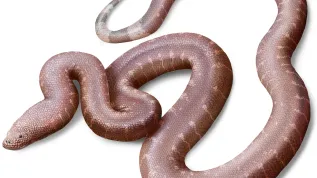
Adding just one protein to the plant genome prevents the water from escaping from the leaves as quickly as it usually does. As a result, the plant consumes up to 25% less water, show American researchers and a Polish scientist. This solution is an opportunity to fight droughts.
Researchers wonder whether it is possible to breed varieties of plants that are resistant to water shortages. Such plants could be grown in areas where access to fresh water is difficult and plant cultivation has not been possible so far. This is particularly important because the human population is growing rapidly, Earth`s climate is warming, and droughts and water shortages are an increasing threat. Work on plants that economically manage water is well underway in laboratories around the world.
An important result comes from the research of the team from the University of Illinois Urbana-Champaign. Scientists have shown the modification of one protein needed in photosynthesis, which makes the leaves of plants more sealed. Less waters escapes from them than from plants without this modification. The tests were carried out on a model plant, tobacco. Savings reached 25 percent, and the size of plants remained standard. The first author of the paper in "Nature Communications" is a Polish researcher working in Illinois, Dr. Katarzyna Głowacka (together with Johannes Kromdijk).
"Plant leaves have stomata that let carbon dioxide, necessary for photosynthesis, into the interior of the leaf. But when stomata open, water escapes from the leaf" - says Dr. Katarzyna Głowacka.
She explains that the warmer and drier the air, the faster the water evaporates from the leaf.
Stomata are like windows. If you want to let fresh air into the house on a cold day, you have to remember that a lot of heat will escape from the apartment. You will have to heat up again. If you want to save on heating, you can not keep your windows open.
It turns out that plants open their "windows" for much longer than necessary. Their water management is not as economical as it could be. And thus they lose more water.
Meanwhile, researchers have shown how to make the stomata open for a shorter time. Short enough to save water, but long enough to get the carbon dioxide needed for photosynthesis.
"If plants on an experimental plot consumed 100 litres of water in a given period, 75 litres of water would be enough for them after the modification" - says Dr. Głowacka.
The research was carried out on cultivated tobacco. A gene from a different, wild variety of tobacco was introduced into its genome. "This way we raised the levels of a photosynthetic protein (PsbS) in the test plant" - said Dr. Głowacka. The biologist expects that there is no need to introduce alien genes. Perhaps a similar modification could be made by simply editing the selected plant`s genome, for example using CRISPR. This way, the new, water-saving plant would not be considered a GMO and its cultivation would not require obtaining so many permits.
But the researcher points out that tobacco is not a good plant for testing drought resistance. That is why scientists want to test similar genetic modifications on sorghum, rice and soy. Only then will it be known whether water-saving plants are more resistant to drought.
"We obtained the results by accident" - smiles Dr. Głowacka. The team from Illinois studied the effects of photosynthetic proteins (researchers previously showed how to get 15% more yields by improving photosynthesis in the shade). It turned out that one of these proteins also affects the work of stomata, and thus - the water management of the plant. Scientists did not expect that.
PAP - Science in Poland, Ludwika Tomala
lt/ zan/ kap/
tr. RL













